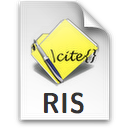

| ORIGINAL ARTICLE |
 |
 |
This study focuses on the search for a natural treatment to reduce lead toxicity in male Wistar rat by using the aquous extract of wheatgrass Triticum aestivum (WG). In addition to the control group (C), rats were exposed to a diet containing 600 mg Pb acetate/Kg diet (Pb), or combined with the WG at 9g/100g diet (Pb-WG) for a period of 6 weeks. Biochemical, reproductive and histological markers were evaluated. The results of haematological parameters show a very significant increase in white blood cells and lymphocytes with the group treated with the lead single. By contrast there was no difference was recorded between the treated group by Pb-WG and the control. A significant decrease in the red blood cells, the haemoglobin and haematocrit was recorded in the group treated with Pb alone. The tests of hormonal and biochemical parameters showed a decrease in the concentration of the hormone triiodothyronin (T3) and thyreostimulin (TSH) in the Pb group compared to the (control and Pb-WG). The serum testosterone concentration, urea, total cholesterol levels, the rate of TGP, TGO and creatinine were significantly increased in rats treated with (Pb) alone compared to (the control and Pb-bl group), while no change in glucose was shown. However, the (Pb-WG) group shows no change compared to the control. The level of calcium showed a significant decrease in the Pb group, and which returns to the normal state in group (Pb-WG) compared to the control. These results are confirmed by the study of histological sections. A morphological change represented by volume shrinkage of the vesicles. A return to the normal structure of follicles was observed in (Pb-WG) group. Histology study of the kidney, testis epididymis showed no change in (Pb-WG) compared to the control group. Contairement in the group exposed to lead (Pb) the parenchyma of the kidney shows dilated distal and proximal tubules causing renal tubular damage. The testes marked destruction and degeneration of germ cells and the light of some seminiferous tubules are empty. The study of the fertility parameters indicates a highly significant decrease in the concentration, the mobility of sperm counts among the treated group by Pb alone. The administration of the wheat grass has increased.
Key words: Hematological, biochemical markers, fertility, TSH, Testosterone and histological sections, Pb, wheatgrass (WG)
